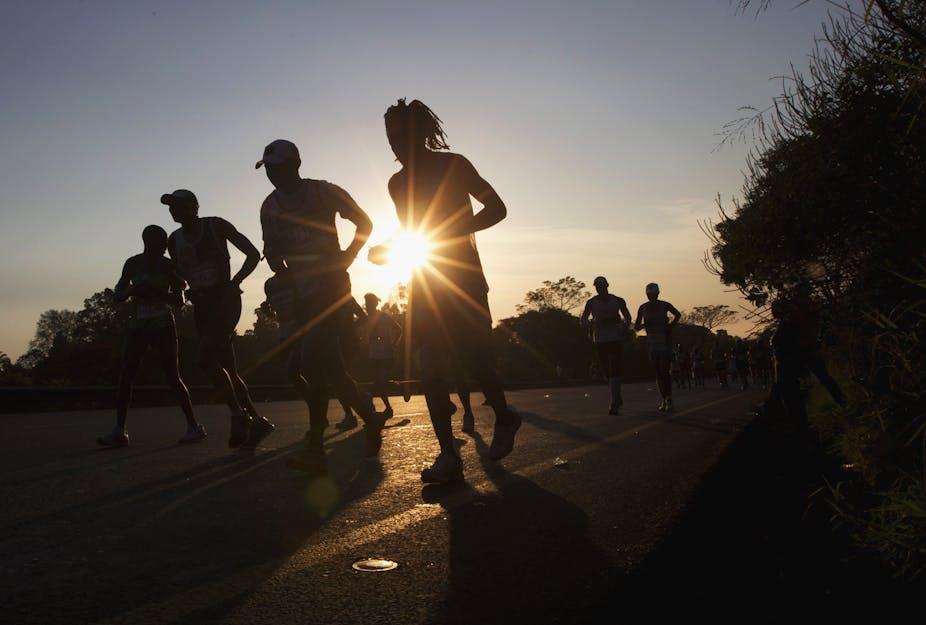Running has been a popular recreational activity for many years. But for marathon runners who train outdoors, the significant proportion of time they spend in the sun means they are potentially exposed to harmful rays.
Solar ultraviolet radiation can lead to sunburn, fatal skin cancers and cataracts – particularly when the exposure to the sun is for a long time or during the hottest time of the day.
For runners, timing their sun exposure and protecting themselves from excess solar ultraviolet radiation are important in preventing the harmful effects of sun rays.
Putting skin cancer into perspective
Across the world, skin cancer has become the fifth most common cancer for men and seventh for women. Australia and New Zealand have seen large increases in skin cancer. In South Africa, skin cancer forms about 30% of all histologically diagnosed cases of cancer.
Ultraviolet rays are at their strongest in places that are:
closer to the equator;
at a high altitude;
have snow, or other highly reflective (e.g. water) surfaces;
have low stratospheric ozone levels (a protective layer up in the atmosphere); and
have skies free of clouds and particles.
South Africa, Australia, New Zealand and South American countries face a particular risk of skin cancer because of their locations. South Africa, like Australia, is relatively close to the equator. New Zealand has clear skies, and parts of the country are at a high altitude and has several snow surfaces. In spring and early summer, all these countries experience the effects of ozone depletion.
Timing South Africa’s sun rays
Our study is the first to measure the exact time that sun exposure is most harmful. We did this by monitoring a sample of four marathon runners during marathons and training. A high-tech instrument that measures sun exposure was attached to an arm of each of the runners.
What made our study unique was that the instrument measured sun exposure every minute and instantly linked it to a specific time. This enabled us to track the exact movement and location of runners, including when they were likely running in shade.
The results show solar ultraviolet radiation levels at their highest between 10AM and 2PM.
Tips for marathon runners
Runners can experience excess sun exposure acutely in the form of sunburn after running for a short-to-medium time during peak solar ultraviolet radiation hours. Years of regular sun exposure can lead to more chronic health effects such as skin cancer and cataracts in adulthood or old age.
Running early in the morning or late afternoon, wearing protective and cool clothing, a hat and sunglasses, and applying sunscreen to exposed skin, will offer protection. Runners should use extra protection or regularly re-apply sunscreen in marathons that span midday hours.
Studies in Australia and New Zealand has provided important data about the levels of sun exposure from different activities. This has been used to guide interventions for groups at risk. For example, the government has produced a vitamin D guideline for New Zealand.
It is hoped that detailed data on different areas of activity in South Africa will lead to targeted interventions and education awareness campaigns.

